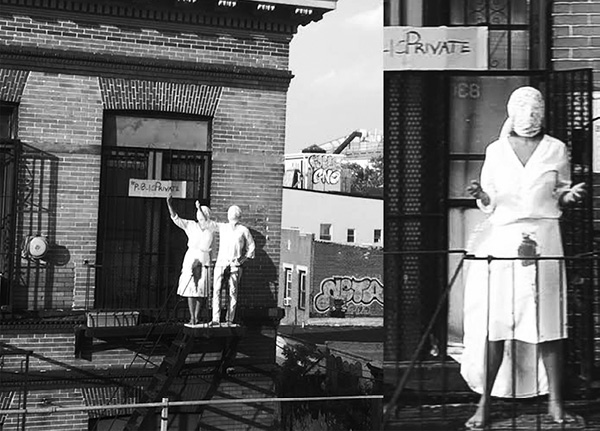
FEMALE BLOOD
first performed on July 26, 2016
Artist’s studio fire escape in Brooklyn, NY
performed twice in 2016
SARAH BERKELEY / NATALIE ROMERO MARX
Lincoln, NE / Clifton, NJ / New York, NY
484617344s484617344b484617344e484617344r484617344k484617344e484617344l484617344e484617344y484617344@484617344g484617344m484617344a484617344i484617344l484617344.484617344c484617344o484617344m484617344 484617344/484617344 484617344n484617344a484617344t484617344a484617344l484617344i484617344e484617344t484617344e484617344c484617344h484617344n484617344i484617344c484617344o484617344l484617344o484617344r484617344@484617344g484617344m484617344a484617344i484617344l484617344.484617344c484617344o484617344m
sarahberkeley.com
FEMALE BLOOD
SARAH BERKELEY / NATALIE ROMERO MARX
We developed “Female Blood” as a part of Public-Private, a performance art series curated by Sarah Berkley. As a whole, the series explored the boundaries of public and private life in New York City. It began with Sarah’s lack of privacy having the subway train stop for a few minutes in front of her curtain-less bathroom window in Brooklyn. She writes about the series: “Our performances were fleeting moments, visible to, but unseen by, most passengers on the subway. There are so many other people, windows and digital screens to look at, our window and fire escape are insignificant blips in the midst of the constant stream of images, bodies, sounds, smells and tastes in this city. And then, our actions ARE significant. The dialogues that happened between performers and people on the street, the images posted on Instagram and Facebook by strangers on the subway elucidate interaction, meaning-making, communication and disruption in the everyday humdrum of a commute.”
The body is a repository of historical information and a primary medium for political action. In the personal and social context, the virtual versus the real, “Female Blood” was a radical performance that challenged the taboos around menstrual blood and the female condition in general. We questioned the ambivalent and misogynistic ways people see blood. We refused to remain discreet about our periods nor silent about our menstrual pain anymore. By anonymously and vulnerably putting ourselves in public wearing blood-soaked white clothes, we made visible the effects of conservative and hetero-patriarchal views that neglect the female body. “Female Blood” elucidated differences in how women and men relate to blood—for men the sight of blood is often the result of violence while for women it’s a monthly sign of a healthy body. Our gestures in “Female Blood” reflected on male-driven violence and bloodshed, the acceptability of symbolically drinking Jesus Christ’s blood in mass every Sunday, and the idea of purity and the secrecy of having our menstrual cycle.